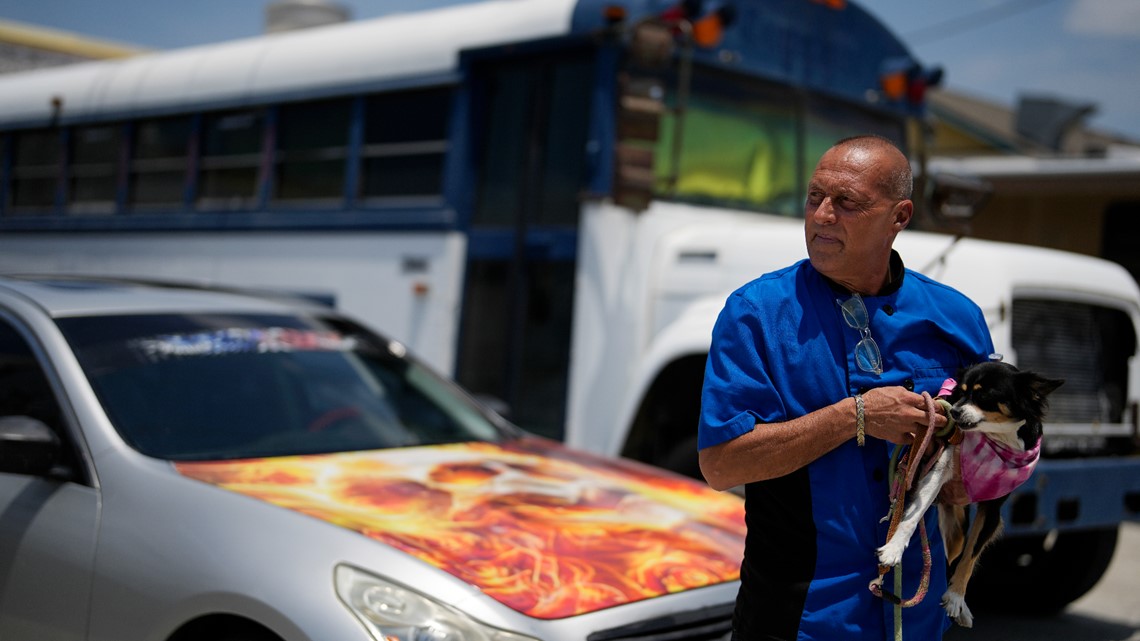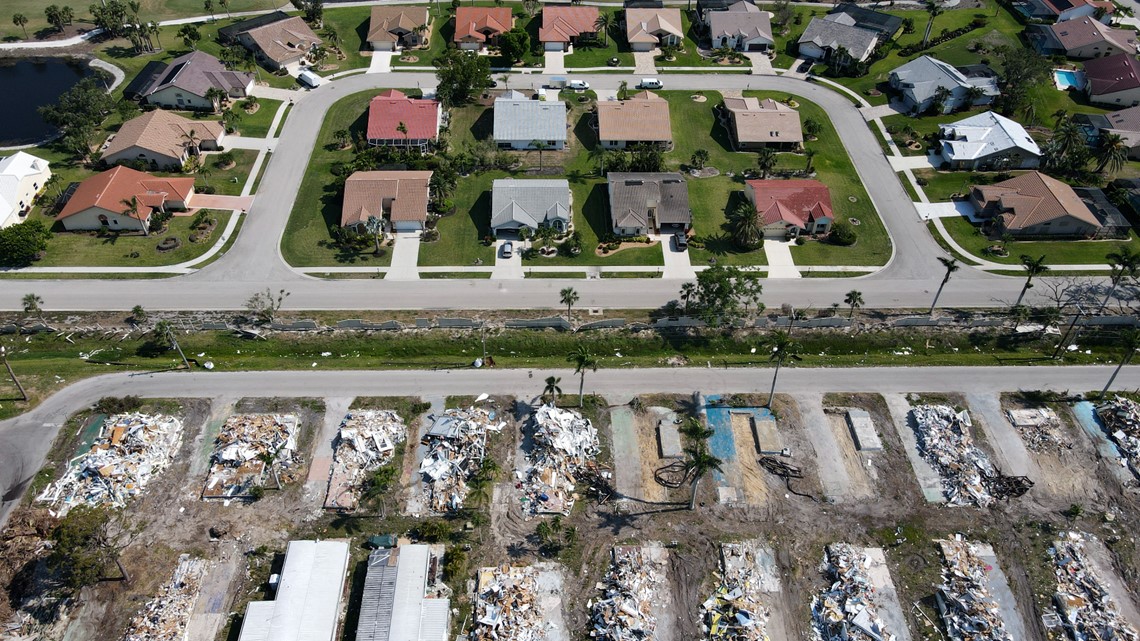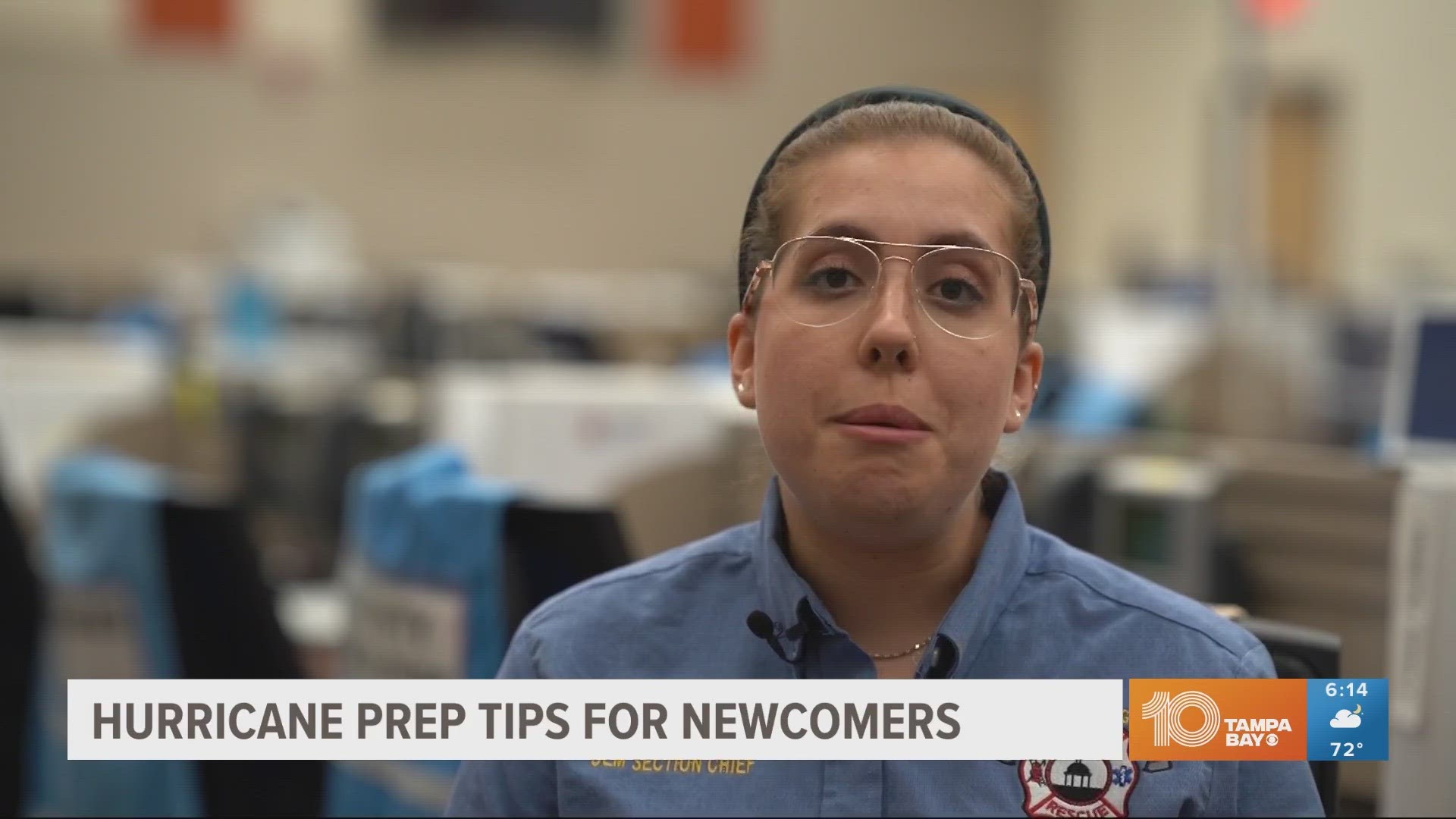FORT MYERS BEACH, Fla. — Eight months ago, chef Michael Cellura had a restaurant job and had just moved into a fancy new camper home on Fort Myers Beach. Now, after Hurricane Ian swept all that away, he lives in his older Infiniti sedan with a 15-year-old long-haired chihuahua named Ginger.
Like hundreds of others, Cellura was left homeless after the Category 5 hurricane blasted the barrier island last September with ferocious winds and storm surge as high as 15 feet (4 meters). Like many, he's struggled to navigate insurance payouts, understand federal and state assistance bureaucracy and simply find a place to shower.
“There's a lot of us like me that are displaced. Nowhere to go,” Cellura, 58, said during a recent interview next to his car, sitting in a commercial parking lot along with other storm survivors housed in recreational vehicles, a converted school bus, even a shipping container. “There's a lot of homeless out here, a lot of people living in tents, a lot of people struggling.”


Recovery is far from complete in hard-hit Fort Myers Beach, Sanibel and Pine Island, with this year's Atlantic hurricane season officially beginning June 1. The National Oceanic and Atmospheric Administration is forecasting a roughly average tropical storm season forecast of 12 to 17 named storms, five to nine becoming hurricanes and one to four powering into major hurricanes with winds greater than 110 mph.
Another weather pattern that can suppress Atlantic storms is the El Nino warming expected this year in the Pacific Ocean, experts say. Yet the increasingly warmer water in the Atlantic basin fueled by climate change could offset the El Nino effect, scientists say.
In southwest Florida, piles of debris are everywhere. Demolition and construction work is ongoing across the region. Trucks filled with sand rumble to renourish the eroded beaches. Blank concrete slabs reveal where buildings, many of them once charming, decades-old structures that gave the towns their relaxed beach vibe, were washed away or torn down.
Some people, like Fort Myers Beach resident Jacquelyn Velazquez, are living in campers or tents on their property while they await sluggish insurance checks or building permits to restore their lives.
“It's, you know, it's in the snap of the finger. Your life is never going to be the same,” she said next to her camper, provided under a state program. “It's not the things that you lose. It's just trying to get back to some normalcy.”


Ian claimed more than 156 lives in the U.S., the vast majority in Florida, according to a comprehensive NOAA report on the hurricane. In hard-hit Lee County — location of Fort Myers Beach and the other seaside towns — 36 people died from drowning in storm surge and more than 52,000 structures suffered damage, including more than 19,000 destroyed or severely damaged, a NOAA report found.
Even with state and federal help, the scale of the disaster has overwhelmed these small towns that were not prepared to deal with so many problems at once, said Chris Holley, former interim Fort Myers Beach town manager.
“Probably the biggest challenge is the craziness of the debris removal process. We'll be at it for another six months,” Holley said. “Permitting is a huge, huge problem for a small town. The staff just couldn't handle it.”
Then there's battles with insurance companies and navigating how to obtain state and federal aid, which is running into the billions of dollars. Robert Burton and his partner Cindy Lewis, both 71 and from Ohio, whose mobile home was totaled by storm surge, spent months living with friends and family until finally a small apartment was provided through the Federal Emergency Management Agency. They can stay there until March 2024 while they look for a new home.


Their mobile home park next to the causeway to Sanibel is a ghost town, filled with flooded-out homes soon to be demolished, many of them with ruined furniture inside, clothes still in closets, art still on the walls. Most homes had at least three feet of water inside.
“No one has a home. That park will not be reopened as a residential community,” Lewis said. “So everybody lost.”
The state Office of Insurance Regulation estimated the total insured loss from Ian in Florida was almost $14 billion, with more than 143,000 claims still open without payment or claims paid but not fully settled as of March 9.
With so many people in limbo, places like the heavily damaged Beach Baptist Church in Fort Myers Beach provide a lifeline, with a food pantry, a hot lunch stand, showers and even laundry facilities for anyone to use. Pastor Shawn Critser said about 1,200 families per month are being served at the church through donated goods.
“We're not emergency feeding now. We're in disaster recovery mode,” Critser said. “We want to see this continue. We want to have a constant presence.”


In nearby Sanibel, the lingering damage is not quite as widespread although many businesses remain shuttered as they are repaired and storm debris is everywhere. Seven local retail stores have moved into a shopping center in mainland Fort Myers, hoping to continue to operate while awaiting insurance payouts, construction permits, or both before returning to the island.
They call themselves the “Sanibel Seven,” said Rebecca Binkowski, owner of MacIntosh Books and Paper that has been a Sanibel fixture since 1960. She said her store had no flood insurance and lost about $100,000 worth of books and furnishings in the storm.
“The fact of the matter is, we can get our businesses back up and running but without hotels to put people in, without our community moving back, it's going to be hard to do business,” she said. “You hope this is still a strong community."
Yet, the sense among many survivors is one of hope for the future, even if it looks very different.
Cellura, the chef living in his car, has a new job at another location of the Nauti Parrot restaurant on the mainland. Insurance only paid off the outstanding loan amount on his destroyed camper and he didn't qualify for FEMA aid, leaving him with virtually nothing to start over and apartment rents rising fast.
But, after 22 years on the island, he's not giving up.
“I believe that things will work out. I'm strong. I'm a survivor," he said. "Every day I wake up, it's another day to just continue on and try to make things better.”
______
AP visual journalist Laura Bargfeld and photographer Rebecca Blackwell contributed to this story.

